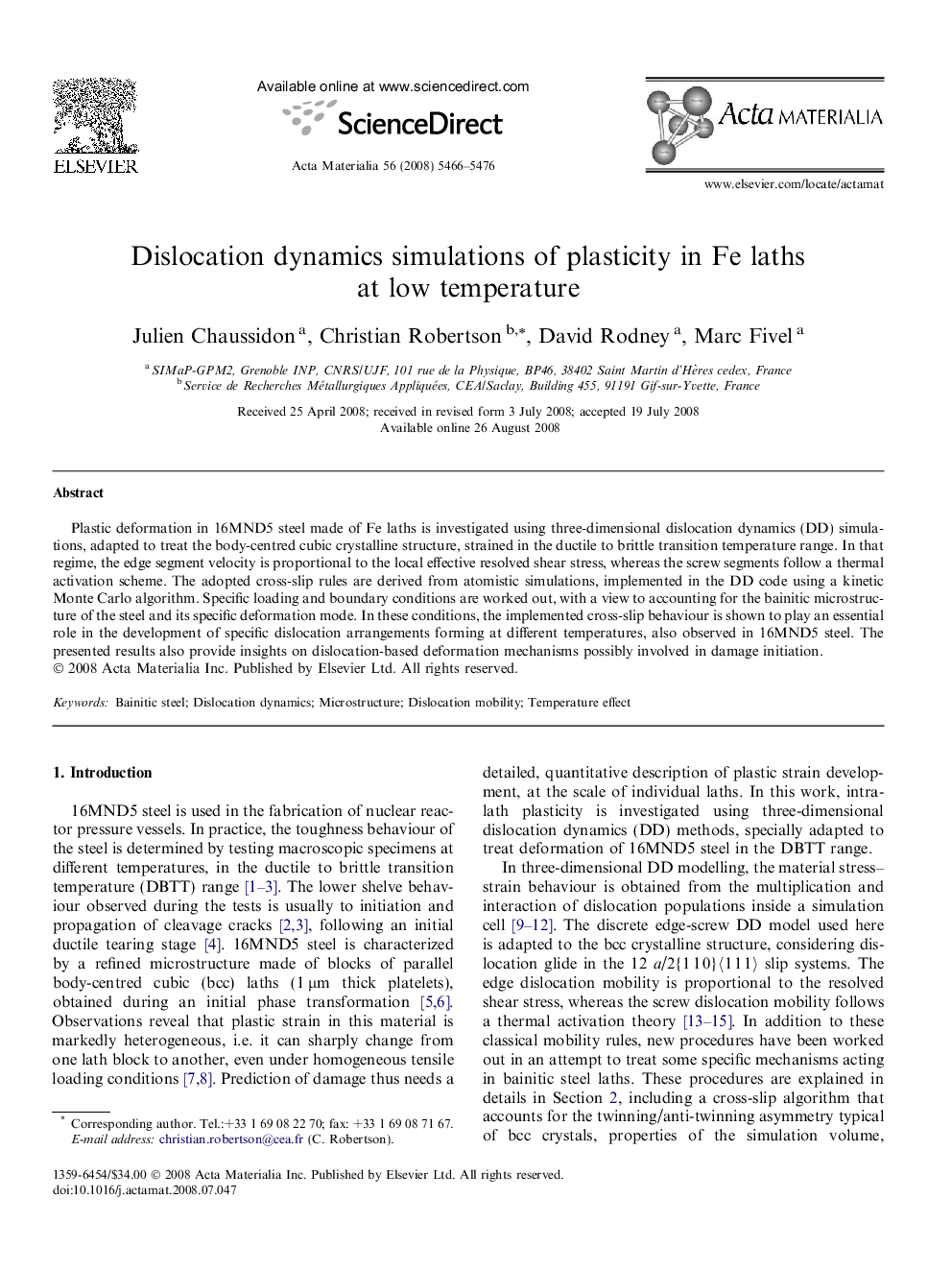| Article ID | Journal | Published Year | Pages | File Type |
|---|---|---|---|---|
| 1449804 | Acta Materialia | 2008 | 11 Pages |
Plastic deformation in 16MND5 steel made of Fe laths is investigated using three-dimensional dislocation dynamics (DD) simulations, adapted to treat the body-centred cubic crystalline structure, strained in the ductile to brittle transition temperature range. In that regime, the edge segment velocity is proportional to the local effective resolved shear stress, whereas the screw segments follow a thermal activation scheme. The adopted cross-slip rules are derived from atomistic simulations, implemented in the DD code using a kinetic Monte Carlo algorithm. Specific loading and boundary conditions are worked out, with a view to accounting for the bainitic microstructure of the steel and its specific deformation mode. In these conditions, the implemented cross-slip behaviour is shown to play an essential role in the development of specific dislocation arrangements forming at different temperatures, also observed in 16MND5 steel. The presented results also provide insights on dislocation-based deformation mechanisms possibly involved in damage initiation.
